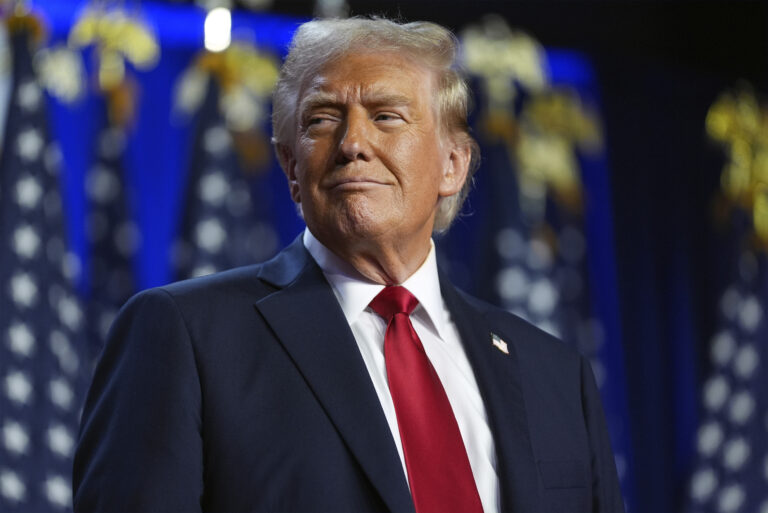 Anyone who remembers the collapse of Lehman Brothers Holdings Inc. little more than five years ago knows what a global financial disaster is. A U.S. government default, just weeks away if Congress fails to raise the debt ceiling as it now threatens to do, will be an economic calamity like none the world has ever seen.
Anyone who remembers the collapse of Lehman Brothers Holdings Inc. little more than five years ago knows what a global financial disaster is. A U.S. government default, just weeks away if Congress fails to raise the debt ceiling as it now threatens to do, will be an economic calamity like none the world has ever seen.
Failure by the world’s largest borrower to pay its debt — unprecedented in modern history — will devastate stock markets from Brazil to Zurich, halt a $5 trillion lending mechanism for investors who rely on Treasuries, blow up borrowing costs for billions of people and companies, ravage the dollar and throw the U.S. and world economies into a recession that probably would become a depression. Among the dozens of money managers, economists, bankers, traders and former government officials interviewed for this story, few view a U.S. default as anything but a financial apocalypse.
The $12 trillion of outstanding government debt is 23 times the $517 billion Lehman owed when it filed for bankruptcy on Sept. 15, 2008. As politicians butt heads over raising the debt ceiling, executives from Berkshire Hathaway Inc.’s Warren Buffett to Goldman Sachs Group Inc.’s Lloyd C. Blankfein have warned that going over the edge would be catastrophic.
“If it were to occur — and it’s a big if — one would expect a series of legal triggers, potentially transmitting the default to many other markets,” said Mohamed El-Erian, chief executive officer of Pacific Investment Management Co., the world’s largest fixed-income manager. “All this would add to the headwinds facing economic growth. It would also undermine the role of the U.S. in the world economy.”
The U.S. stock market lost almost half its value in the five months following Lehman’s failure. The country had its worst recession since the Great Depression (INDU), taking the global economy down with it. Unemployment (USURTOT) surged to 10 percent, the highest in three decades.
Another depression was prevented only by unprecedented action by the Federal Reserve, which pumped $3 trillion into the financial system. The U.S. Treasury provided about $300 billion of capital for the nation’s banks.
Treasuries are among the most popular forms of collateral pledged at derivatives clearinghouses, including the one owned by CME Group Inc. (CME:US), the world’s largest futures market. Government agencies such as Freddie Mac and Fannie Mae, which use interest-rate swaps and derivatives to hedge mortgage portfolios, would be affected by a downgrade because it could lower their counterparty ratings and result in more collateral being demanded by trading partners.
“We can’t even imagine all the things that might happen, just like Henry Paulson couldn’t imagine all the bad things that might happen if he let Lehman go down,” said Bill Isaac, chairman of Cincinnati-based Fifth Third Bancorp and a former chairman of the Federal Deposit Insurance Corp., referring to the former U.S. Treasury secretary. “It would create chaos in financial markets.”
Capital Shortfalls
Higher borrowing costs could slow the housing recovery. If 30-year mortgage rates climbed to 6.5 percent from 4.5 percent, a borrower who can now afford the monthly payment on a $200,000 loan would only be able to take on about $160,000 of debt when buying a property, forcing down sale prices.
It would be “bad — both for affordability and for consumer confidence,” said Jed Kolko, chief economist for Trulia Inc., an online property-listing service.
Banks would have to write down securities on their books that are losing value and face capital shortfalls, according to MIT’s Johnson.
“The government wouldn’t have the cash to rescue the banks this time either,” Johnson said.
About half of the U.S. debt is held by foreign governments, central banks and other overseas investors, according to Treasury data. A default would throw those holdings into question as well as the dollar’s status as the world’s reserve currency, Johnson said. During the 2011 debt-ceiling scare, foreign investors shunned Treasury auctions for about three months, according to data compiled by JPMorgan.
China, Japan
China is the largest holder of U.S. Treasuries, with $1.3 trillion in July, according to Treasury data. Japan follows with $1.1 trillion.
Even if Treasury prices aren’t affected by a default, the damage in other markets could be devastating. U.S. stocks fell 7 percent in one day when Congress rejected the government’s bank-rescue package in 2008, before passing it a few days later.
The market shocks would be enough to tip the U.S. back into recession and drag the world economy down, according to Desmond Lachman, a fellow at the Washington-based American Enterprise Institute. The event could prove to be the trigger that reverses a weak and fragile recovery, said William Cunningham, head of credit portfolios for the investment arm of Columbus, Ohio-based Nationwide Mutual Insurance Co. Lehman’s collapse was a similar spark, he said.
“Is this the straw among other things that tips an economy without drivers of growth back down into a negative spiral?” Cunningham said.
War Rooms
While a short-lived default might be fixed without major damage to the global economy, drawing a line between short and long isn’t easy, according to Evercore’s Altman.
“If you missed an interest payment by two hours, the markets might look entirely beyond that and forgive you,” Altman said. “If you miss an interest payment by two days, four days, six days, that’s a different story. It’s very difficult to be scientific about this.”
During the final days of Lehman Brothers, Wall Street firms set up war rooms to chart the potential impact of the firm’s demise and prepare strategies to cope with the consequences. Their scenarios, which focused on credit-default swaps, didn’t forecast the contagion that quickly spread after the bankruptcy.
Now, some banks are preparing contingency plans for a possible U.S. default, such as stocking retail branches with more cash, the New York Times reported last week. Those preparations might prove useless once again.
“Nobody knows what would happen if there were a default because the reality is there’s never been even a technical default in the U.S.,” said Russ Koesterich, chief investment strategist at BlackRock Inc., the world’s largest asset manager. “Everyone’s flying blind.”
“If we miss an interest payment, that would blow Lehman out of the water,” said Tim Bitsberger, a former Treasury official under President George W. Bush and now a New York-based managing director at BNP Paribas SA. “Lehman was an isolated company, and now we are talking about the U.S. government.”
Buffett has asked politicians to stop using the debt limit as a weapon in policy debates. Morgan Stanley CEO James Gorman urged employees to contact their congressmen to remind them about the “unacceptable consequences” of a default.
“It should be like nuclear bombs, basically too horrible to use,” Buffett, 83, said in an interview published by Fortune magazine last week.
One unexpected consequence of Lehman’s collapse was the seizing up of the repurchase agreement, or repo, market — a form of secured, short-term borrowing used by Wall Street banks and investment firms. Many of Lehman’s trading counterparts discovered the collateral they believed was backing their loans wasn’t there to grab as rules allowed. That scared investors in the rest of the market, closing off other trades and leading to fire sales of securities and further price declines.
A government default could freeze the repo market more than Lehman’s collapse because U.S. debt forms its backbone. At least $2.8 trillion of Treasuries serve as collateral for repo and reverse-repo loans, according to Fed data.
In the event of a default, Treasuries might no longer be eligible as collateral for repo agreements, according to James Kochan, Wells Fargo Funds Management LLC’s chief fixed-income strategist. The cheap funding for the holdings lowers the yields demanded on the investments, and unwinding the positions could amplify losses for lenders and borrowers.
If Treasuries were ejected from the market, “Well, holy cripes,” Kochan said in an interview.
In 2011, the last time Congress was gridlocked over the extension of the debt ceiling, repo rates rose as money-market funds pulled back because they didn’t want the risk of holding a security in default.
“A lot of this is about fear of the unknown,” said Scott Skyrm, a former head of repo and money markets for Newedge USA LLC and author of “The Money Noose: Jon Corzine and the Collapse of MF Global.” “There is no upside to being in the market in that environment, so people pull out.”
The U.S. didn’t default on its debt in 2011. Republicans and Democrats reached a last-minute deal to raise the borrowing limit. Even so, the posturing hurt consumer confidence and wiped out $6 trillion of value from global stocks.
While none of the people interviewed for this story expect the world’s largest economy to default this time either, most say the chances of it happening now are higher than in the past.
“It would be insane to default, but it’s no longer a zero-percent probability,” said Simon Johnson, a former chief economist of the International Monetary Fund who teaches economics at the Massachusetts Institute of Technology and is a columnist for Bloomberg View.
The U.S. hasn’t defaulted since 1790, when the newly formed nation deferred until 1801 interest obligations on debt it assumed from the states, according to “This Time Is Different,” a history of financial crises by Carmen Reinhart and Kenneth Rogoff.
Technical Default
In 1979, the U.S. was late to make payments on about $122 million of bills, in part because of “severe technical difficulties” that the Treasury said stemmed from a word-processing failure, according to the Financial Review’s August 1989 issue. While payments were made after a short delay, including with interest for tardiness, the hiccup caused yields to rise by half a percentage point and stay there for months.
A default today could be deemed “technical” because it would be the result of the government’s unwillingness to pay, not its ability, JPMorgan Chase & Co. analysts including Alex Roever said in a report last week.
In a technical default, only the prices of Treasury bonds that mature or have coupon payments would fall, according to the analysts. Money-market funds wouldn’t be forced to sell government bonds, and the Fed probably would continue accepting them as collateral for emergency cash.
That distinction is nothing more than an effort to downplay the danger of default, according to MIT’s Johnson. Sovereign defaults are always about the political will to pay because most governments can print money to make payments if they want to, Johnson said.
Insufficient Funds
Labeled technical or not, a default is still a default, said Jim Grant, founder of Grant’s Interest Rate Observer.
“People have typically turned to Treasuries as a safe haven, but what will happen when they realize it’s not safe anymore,” said Grant, who has followed interest rates since the 1970s. “Financial markets are all confidence-based. If that confidence is shaken, you have disaster.”
Treasury Secretary Jacob J. Lew has said the government will have only $30 billion of cash left by Oct. 17 to meet its commitments. Those can run as high as $60 billion a day, which means the Treasury will need to borrow more to meet its liabilities, Lew said. Goldman Sachs expects the Treasury’s cash balance to be depleted by Oct. 31 and “possibly quite a bit sooner,” analysts at the bank wrote in an Oct. 5 report.
The Treasury has $120 billion of short-term bonds coming due on Oct. 17, according to data compiled by Bloomberg. An additional $93 billion of bills are due on Oct. 24. On the last day of the month, $150 billion needs to be paid back, including two-year and five-year notes that mature. The total due from Oct. 17 through Nov. 7 is $417 billion.
Fed Support
While some expect a 2013 default will drive up yields only on Treasury securities coming due, others including former Deputy Treasury Secretary Roger Altman see a wider impact in bond yields, pushing up borrowing costs.
“That would be higher interest costs over some considerable period of time for the U.S. and for U.S. taxpayers,” said Altman, who’s chairman of New York-based investment bank Evercore Partners Inc.
The yield on 10-year U.S. bonds dropped to a two-month low of 2.58 percent on Oct. 3. While short-term bill rates and the cost to insure against a default have risen, volatility in Treasuries has fallen, a sign that investor confidence in the Federal Reserve’s bond-purchase program is outweighing worries over the budget battle.
Rating Downgrade
Some point to Standard & Poor’s 2011 downgrade of the U.S. credit rating, which led to an increase in Treasury prices, not a drop. Even after the rating was lowered by one level to AA+ from AAA, investors continued buying U.S. government bonds as they flocked to safety, according to Joe Davis, chief economist at Vanguard Group Inc.
A downgrade to default rating would be different, said Peter Tchir, founder of New York-based TF Market Advisors. Investors, structured vehicles, collateral agreements, derivatives contracts and other trading covenants have ratings-based rules that could force the replacement of Treasuries in a trade or portfolio, he said.
“Once the system starts to break down related to settlement and payments, then liquidity disappears, as we saw after Lehman,” Tchir said. “Perhaps the things we’re worried about now will be fine after a U.S. default, but who knows what others will not be.”











One Response
Far be it from me to argue with Business Week but I don’t understand why the government won’t be able to pay its debts. The government takes in about $250 billion a week in taxes and the interest payments on our debt is about $25 billion a week. So why won’t they be able to make good on those interests payments?